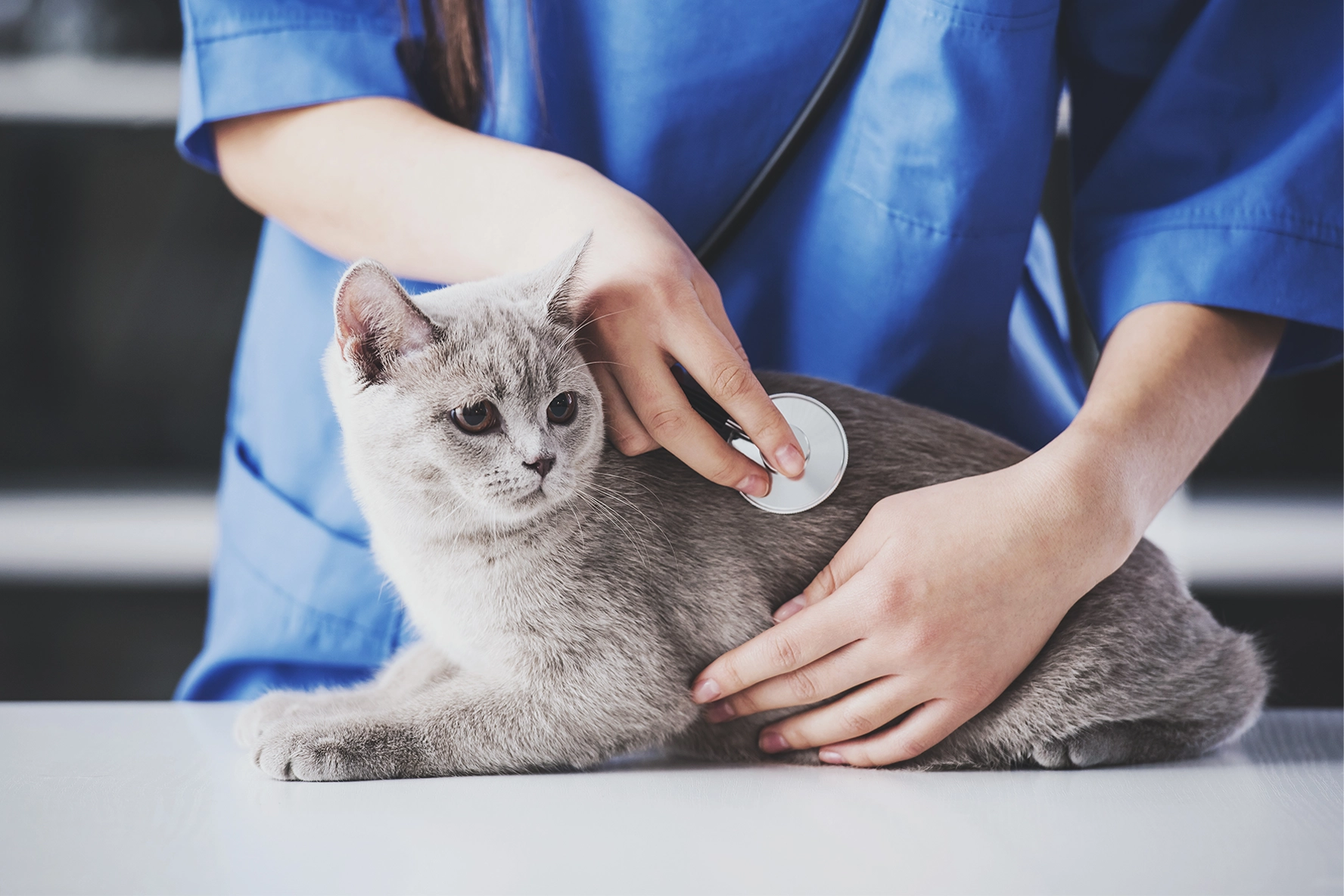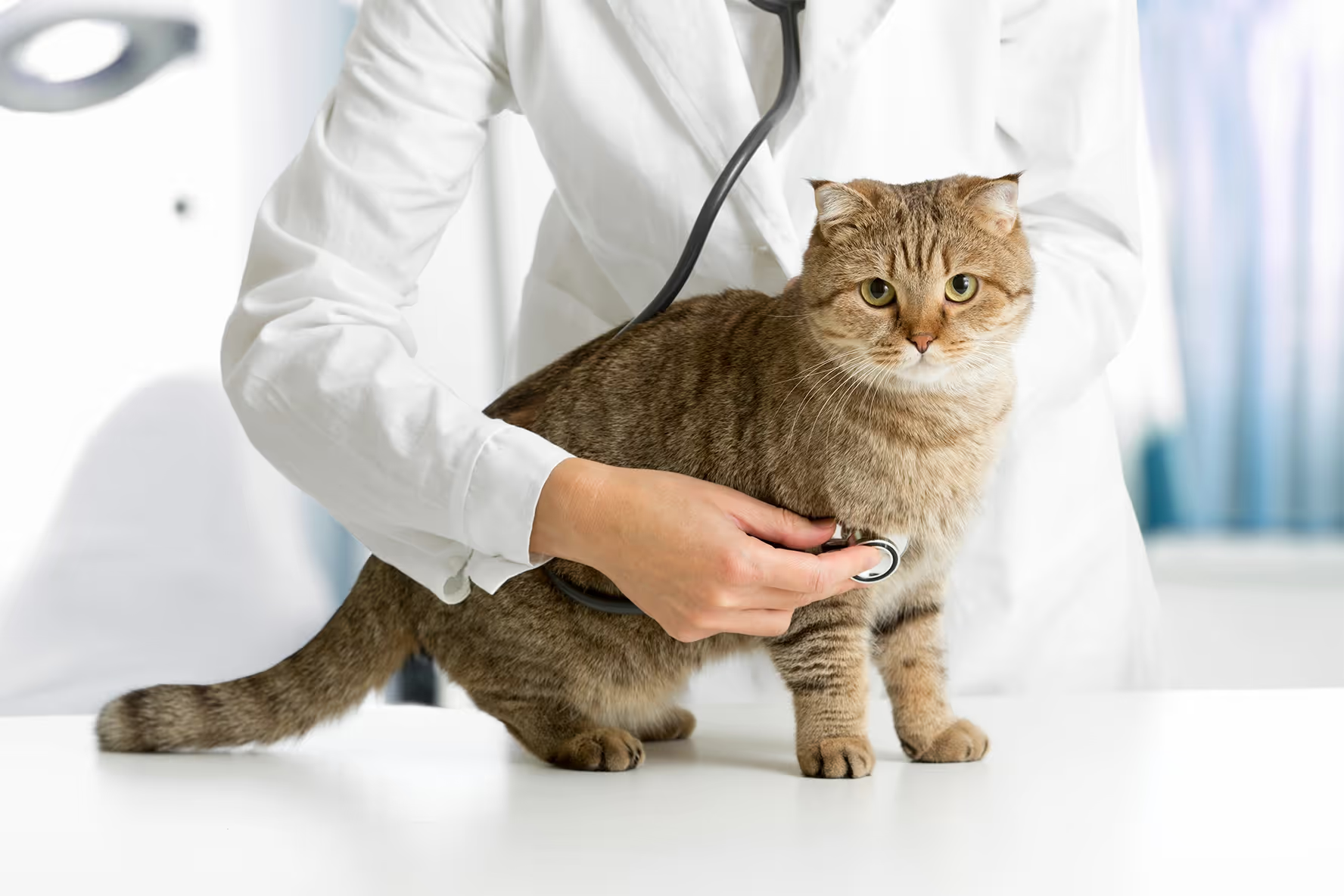
Why Do Dogs Get Nauseous While On Chemotherapy?
Chemotherapy is a treatment method that specifically attacks cells that divide at a higher rate. Cancer is a collection of mutated cells that are rapidly dividing, at an unhealthy rate, making chemotherapy a great treatment plan for it.
However, there are some areas of the body where cells do need rapid turnover to properly operate within the system. Cells in areas like the bone marrow, where red and white blood cells and platelets are developed, as well as the stomach and intestines, where the cells in the lining are regularly replaced, are often affected by chemotherapy in a negative way, which explains why the most common side effects for dogs undergoing chemotherapy treatment includes stomach upset and bone marrow suppression (lowered immune system).
You can learn more about the different side effects that chemotherapy causes in our post here.
Signs Your Dog May Be Nauseous
Though vomiting and decreased appetite are the most obvious symptoms of nausea, there can also be more subtle symptoms that can alert you that your dog is feeling unwell, and noticing these symptoms early on can help you to support your dog before those symptoms get worse.
Subtle signs of nausea in dogs
- Excess Panting
- Licking the floor or their lips
- Drooling
- Shaking or trembling
- Restlessness
- Signs of stress or nervousness
- Showing signs of wanting food but not eating
- Swallowing or gulping air 2,10
Home Management for Nausea
Whether your dog is experiencing nausea from chemotherapy or otherwise, there are a few things that pet parents can do at home to help mitigate that uncomfortable feeling. These are also good tricks to try if your dog isn’t eating well or experiencing stomach problems for other reasons.
Chicken and Rice
Bland, easy foods are a frequent recommendation for an upset stomach, with boiled chicken—or ground beef—and rice as the most common recipe. The bland food helps to soothe their stomach, and allows them to recover internally by limiting the amount of work that their digestive system has to do. Boiled chicken and rice are a combination that is highly digestible and low in fat, which makes it easier to break down compared to their usual balanced dog food meals. Furthermore, chicken and rice is often a more enticing meal for a dog with a lessened appetite. And some research in children experiencing diarrhea has shown that glucose from the rice starch is absorbed quickly and increases water and electrolyte absorption, which helps to keep water in the body and solidify stool; many vets believe that canine digestive tracts react similarly to rice.1 Make sure to keep the food bland and do not season it with spices or herbs.
It’s always important to check in with your vet if changing your dog’s food is the right choice to help with their stomach problems. It often seems like a catch-all to give your dog some chicken and rice, but there are some cases where it may be a detriment to your dog’s wellbeing. Before making the switch, be sure to let your vet know of your dog's symptoms and behaviors, and ask if the chicken and rice method would be worth giving a try.
Managing Nausea for Dogs Without Vomiting
Some dogs may only show subtle signs that they are experiencing nausea, without throwing up or having decreased appetite. In these cases, you want to support your dog’s body in working through the experience of discomfort without pushing it to the point of vomiting.
One thing that you can do to help them overcome a wave of nausea is to pick up their food and water bowls and only provide small amounts of water frequently. Stop your dog from consuming anything else, including grass, rawhide toys, or other edible chew toys. Sometimes lessening stress and limiting consumption can help the nausea pass over faster.7
Veterinary Support for Nausea
Sometimes, depending on your dog’s level of symptoms, your vet may offer some at-home medications that you can give your dog to manage their nausea. Anti-Nausea drugs are a common support for dogs undergoing chemotherapy treatment, as gastrointestinal upset is the most common side effect for dogs to experience.2,4,8
It’s important to be sure to get these from your vet, as there are no fully safe anti-nausea or anti-vomiting medications that are available over the counter.3 The nausea support methods that are available without medication are exclusively practices that change your dog’s behavior or foods. Be sure to ask your vet to prescribe your pooch the right kinds of medications for their needs, and ask any questions you may have about when and how to give the medications.
When To Seek Immediate Veterinary Attention
It is relatively uncommon for dogs going through chemotherapy to have to seek out emergency veterinary attention due to side effects, with less that 5% of all canine chemotherapy patients experiencing severe complications. However, it’s always good to have the knowledge of what could happen, so you are prepared to manage anything that comes your way.4
Signs that your dog may need medical attention include:
- Increased frequency or severity of vomiting
- If your dog is throwing up occasionally, once or twice per day, that is something that can easily be managed at home with some of the methods listed above or recommended by your vet as long as it is only for a few days. However, if your dog is throwing up several times within an hour, or having multiple episodes during the day—especially when there is more coming out of their body than they are able to consume of either food or water—contact your vet immediately.
- Blood in excrement
- Blood in your dog’s vomit can be a sign that something more is going on internally than what you are currently aware of. It’s important to keep an eye out for any signs of blood in your dog’s waste if they are undergoing treatment that creates nausea, as there may need to be additional measures taken during their treatment, or adjustments may need to be made to their plan. As a rule of thumb, if you ever encounter blood in any of your dog’s excrement (including urine) your dog should be checked out by a vet as soon as possible.
- Inability to keep medication down
- If your dog is throwing up their anti-nausea medication, it’s important to address that with your vet. If you are unable to manage their nausea with the medication given, there may be additional methods you can take to move forward, or in a worse case, an underlying condition that is making the medication ineffective. Either way, if the medication you intend to give your dog to manage their nausea isn’t working, your dog may be suffering, and getting treatment will help keep them happy and comfortable.
Nausea Isn’t Unavoidable, But You Can Make It Manageable
There are some dogs that are lucky and don’t experience any side effects, but for the ones that do, you are now prepared for whatever the nausea throws at you. When it comes to their chemotherapy treatment in general, lessening the stress your dog may be under is going to do a lot of work towards keeping them comfortable and mitigating some of the strain from any side effects they may experience.
Watching your dog go through nausea—especially during something as tough as chemotherapy—can be heartbreaking. But you are not powerless. From recognizing some of the early signs, to offering the right foods and meds, to working with your vet to offer the best support possible, there’s a lot you can do to help your pup feel better.2 Every dog responds a little differently so it’s crucial that you don’t hold back any questions you may have for your vet. With the right support, your dog can get through their treatment with more good days than bad—all while feeling your love every step of the way.
ImpriMed helps dogs with canine lymphoma find an efficient treatment for their individual needs.
With ImpriMed’s Personalized Prediction Profile at work, your pet can go through the shortest possible chemotherapy treatment to get into remission thanks to advanced medicine that identifies the most effective chemotherapy protocol for each individual pet based on their needs as an individual. Using one of a kind technology, ImpriMed is able to take your dog’s live cancer cells and run them through an AI system to identify the most effective possible treatment for your dog, rather than using the traditional method of trial-and-error to find the most efficient treatment for your pet. Getting through treatment as fast as possible limits the potential amount of side effects your dog will experience.
Take the guess-work out of your dog’s lymphoma treatment. Learn how to get your vet involved with ImpriMed here.
References:
- https://www.nejm.org/doi/full/10.1056/NEJM199102213240802
- https://www.petmd.com/dog/symptoms/nausea-dogs
- https://www.petmd.com/dog/general-health/which-over-counter-human-medications-are-safe-dogs
- https://vhc.missouri.edu/small-animal-hospital/oncology/cancer-treatment/chemotherapy/
- https://pmc.ncbi.nlm.nih.gov/articles/PMC2684058/
- https://www.petmd.com/dog/procedure/chemotherapy-for-dogs
- https://www.vet.cornell.edu/departments-centers-and-institutes/sprecher-institute-comparative-cancer-research/treatment-strategies/managing-common-side-effects-chemotherapy
- https://www.thepetoncologist.com/blog/just-in-case-medications
- https://todaysveterinarynurse.com/oncology/chemotherapy-induced-side-effects-prevention-and-treatment/
- https://www.dogcancer.com/articles/side-effects/nausea-in-dogs/


